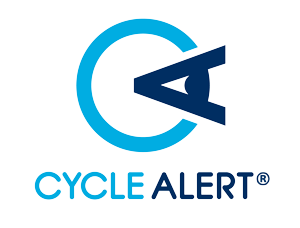Having a fleet safety training program in the workplace is no longer a desirable bought about by the company’s designated enthusiastic first-aider, it’s imperative to the reputation and prosperity of the firm.
Risk associated with fleet exposure include:
- A leading cause of work related injury
- A number one cause of occupational fatalities
- One of the most frequent accident causes
- One of the leading causes of third-party liability claims
Merely focussing on the minimum legal requirements will not win you work, and with the level of competition in the industry, an appointed health and safety manager cannot be considered a luxury but rather an integral asset to the success and efficacy of the company and its employees.
So, as that appointed health and safety manager where do you start?
In the first instance here are some really simple strategies to get you on your away to building the perfect, streamlined fleet safety program:
Establish the objectives
It may sound obvious but establishing the objectives of your fleet safety training program is the first step in achieving them. The end game is to make the fleet safety culture in your company so engrained in the actions of you and your colleagues that it no longer becomes an objective, but rather a way of life.
First things first though(!), list your objectives and review them from time to time as they are likely to develop. The underpinning of you objectives should include (but not limited to):
- Providing an accident/injury free workplace
- Reducing cost/litigation associated with vehicle incidents
- Full compliance with legal requirements (and those stipulated by professional bodies including Crossrail/FORS)
Recognise the hazards
If you want to introduce safety strategies to prevent hazards in the workplace, you must first identify exactly what these hazards are. In the vehicle, on the road, in the yard.
Keep this process communicative and open to suggestions from all staff members, to make sure you’ve covered all bases.
Establish who may be harmed
Once the hazards potentially affecting your business have been identified, decide who can be harmed. Remember that work related road risk should extend to account for the welfare of everyone who may come into contact with your fleet ie other road users too, and account for this in your analysis. As your program grows, the safety materials you choose to distribute may be developed and tailored to suit each ‘type’ of employee/member of public. By establishing ‘who may get hurt when…’ from the very beginning, you can lay down very clear foundations for the development of your safety program.
Components of your fleet training training program should include:
- Driver requirements and responsibilities
- Vehicle maintenance program
- Driver safety training
- Driver records checks/reviews
- Accident reviews
Evaluate the risk and determine the control measures
Once you have established the hazards and potential subjects for your fleet safety training program, decide how you control/eliminate these hazards. Every company is different and every company needs a multi-faceted approach in order to optimise his/her safety training program. Tools can include (but are not limited to) driver training, establishing regular vehicle/internal/health checks, implementation of accident prevention technology, distribution of manuals and other best practice written material, correct display of hazard signage, use of personal protective equipment (PPE) and the setting up of internal company health and safety policies.
Record and Regularly Review your findings
Determine the means by which you will be recording any incidents that take place at work, or on work-related errands. The maintenance of such reports will assist in your regular reviews and evaluations of the success of your fleet safety program. They will help you identify specific problem areas and in taking appropriate corrective action.
For further information on fleet safety please visit HSE.gov.uk

